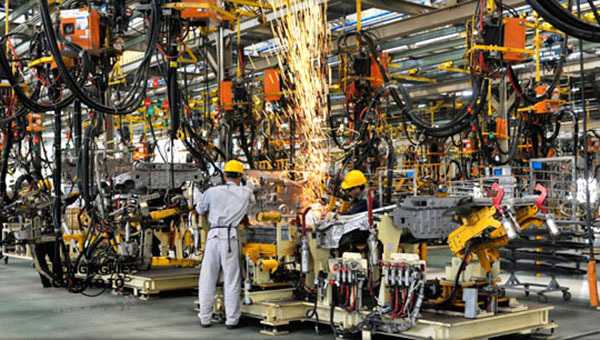Low-cost Vietnamese-made cars hit the market
Despite slow sales, Chinese automakers enter Vietnamese market
Autos from Europe find narrow path into Vietnam: EuroCham
 |
Vietnam’s rapidly growing automobile market is luring more foreign automobile parts manufacturers to the country to explore business opportunities.
Being aware of the promising market, a Malaysian delegation with 15 enterprises operating in the automobile industry last week came to Vietnam to seek for business opportunities.
According to Malaysian Ambassador to Vietnam Dato' Mohd Zamruni Khalid, Vietnam is an attractive market for the automobile manufacturing industry because of its young markets and attractive investment and business policies.
Besides the Malaysian investors, foreign automobile part makers from other countries, such as South Korea’s PHA, have so far also set up their production bases in Vietnam with an aim to seize huge opportunities of the market.
According to Lee Jae Seung, CEO of PHA Vietnam, which is led by a group of Pyeong Hwa Automotive, YMP Plus, Dong Yang Vina Industry Co., Ltd., and MiChang Vietnam, once PHA automotive parts manufacturing project in the northern port city of Hai Phong become operational in September this year, its products will be supplied to big car manufacturers like Volkswagen, BMW, Audi, Ford, and Hyundai.
PHA Vietnam started construction of four automotive parts manufacturing plants with the total investment capital of US$32.3 million in Hai Phong’s DEEP C Industrial Zones late last year. The move aligns with the Vietnamese government’s policies on promoting investment in the local support industries.
Time for investments
According to Ringier Trade Media, the organizer of the ASEAN Automotive and Motorcycle Parts Manufacturing Summit 2019 held in Hanoi recently, Vietnam is a growing car market, which reflects the enormous commercial potential in components and parts.
Vietnam already has factories of the most recognizable international brands. With favorable government policies, easy investment procedures, and access to the ASEAN, EU, and the APEC, the Vietnamese automotive industry is projected to enjoy the fastest growth in Southeast Asia in the next 20 years, which makes it the best place to invest right now, Ringier Trade Media said.
Earlier, Chening Fan, director of the Taiwan External Trade Development Council, also said many Taiwanese auto parts enterprises have invested in manufacturing in Vietnam, but mainly produce for exports. Currently, the enterprises are paying attention to Vietnam as well as the ASEAN’s more than 600 million potential consumers.
By investing in Vietnam, automotive parts can go for local consumption and for tax-free export to the region, Fan said, referring to Vietnam’s competitive wages and attractive foreign investment environment.
Meanwhile, Luong Duc Toan from the Department of Legal Affairs under the Ministry of Industry and Trade, said that every year Vietnam still imports over US$3 billion worth of components and spare parts for automobile assembly and car repair.
In the last two years, Vietnam’s auto industry has developed quite rapidly. The country last year produced and assembled over 250,000 vehicles, meeting about 70 percent of domestic demand.
Currently, there are over 40 enterprises involved in automobile assembly and production in Vietnam and most of them are of small and medium size, with design capacity of producing and assembling about 800,000 vehicles a year, but they are producing below the designed capacity.
Toan said that Vietnam has huge potential to develop the automobile industry, but it must attach itself to the regional and global value chains.
Therefore, the immediate priority for the industry is to deeply participate in this value chain, Toan suggested, pointing to three main focuses, including the healthy development of the automobile market, maintaining and promoting the domestic production and assembly of cars, and developing support industries to supply to the automobile sector. Policy solutions also need to be formulated in support of the above three groups of solutions.
Hanoitimes
 There are over 40 enterprises involved in automobile assembly and production in Vietnam, with designed capacity of producing and assembling about 800,000 vehicles a year, but they are producing below the designed capacity.
There are over 40 enterprises involved in automobile assembly and production in Vietnam, with designed capacity of producing and assembling about 800,000 vehicles a year, but they are producing below the designed capacity.